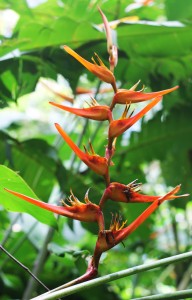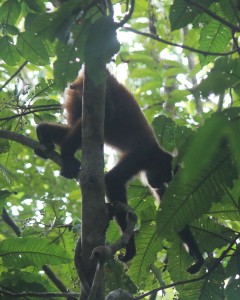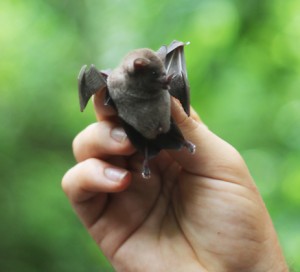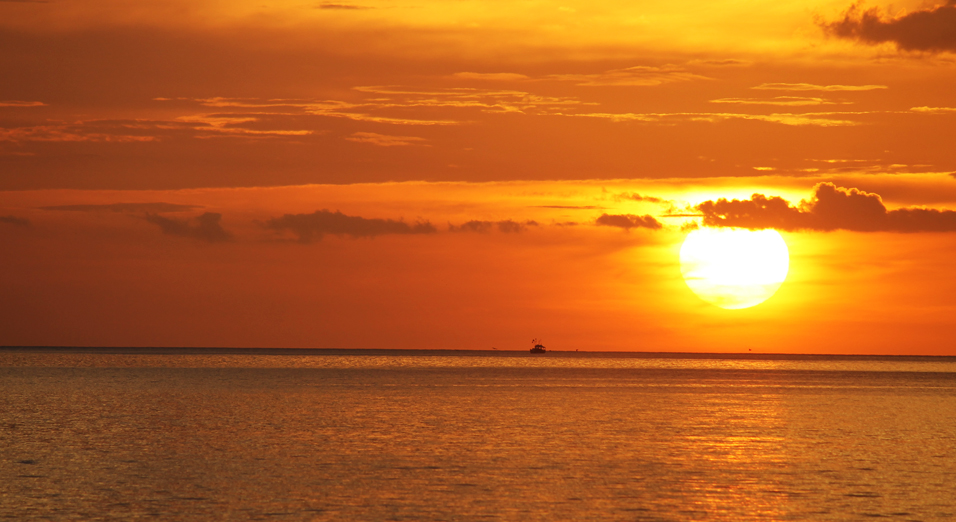[Can school really be this fun?] We have arrived in Monteverde! You can see the map below of where I have been these past two weeks since departing San Jose. I am at the Biological Station [I] for three weeks before we start our second field trip.
As some of you may have heard, there was an earthquake in Costa Rica (September 05, 2012) that had a magnitude of about 7.6. Luckily, there was not a lot of serious reported damage. The epicenter was very near to where we were camping in Santa Rosa [H]. With much luck involved, that morning we had took down camp and loaded the bus five minutes before the earthquake started. The roads were very rocky so we didn’t even find out about the earthquake until after!
Now back to our first field trip: Without having to go through every single day of what we did, I will get straight into telling you about four days that were pretty awesome.
(Day 2) We had spent the night in a small town called Sierpe [B] and when we woke up, we had breakfast and started loading our gear into boats.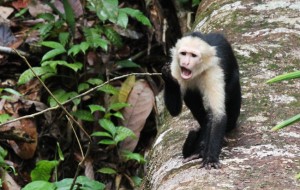 The dock was right next to the hotel, so it wasn’t a far walk. The previous night, we had a lecture about mangroves in order to prep us for what we were to see. The morning was spent on the boats going down the Sierpe River with many stops along the way. We learned about the four types of mangroves (red, black, white, tea) that were there and their adaptations that allow them to compete in brackish water. We also got to see snakes, frogs, and white-face monkeys! The morning ended with us climbing like monkeys through a section of red mangroves and swimming in the river.
The dock was right next to the hotel, so it wasn’t a far walk. The previous night, we had a lecture about mangroves in order to prep us for what we were to see. The morning was spent on the boats going down the Sierpe River with many stops along the way. We learned about the four types of mangroves (red, black, white, tea) that were there and their adaptations that allow them to compete in brackish water. We also got to see snakes, frogs, and white-face monkeys! The morning ended with us climbing like monkeys through a section of red mangroves and swimming in the river.
After some technical difficulties with the boats we were in after lunch, we traveled to the San Padrillo campsite of the Corcovado National Park in order to set up camp. Being right on the beach, of course we went swimming before dinner and then learned about some species that are around the beach.
(Day 5) Much to our surprise because of how humid it was, the forests of Corcovado National Park [C] are not considered a rainforest. The amount of rainfall there doesn’t make the cut so it is considered a wet forest. We got to explore the wet forest on this day of our trip by doing a five mile hike from our campsite to Llorena Beach. A part of the hike was along the beach, but for the most part we were in the forests listening to the birds and howler monkeys and seeing all the plants. It was a cool experience, especially because we could do the hike at our own pace and not as a big group. The goal of the hike was for us to experience and feel what a true tropical forest is like and to be able to use it as a baseline to compare to other forests we will be hiking through the rest of our time in the Rich Coast. 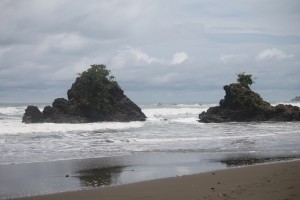
(Day 6) Isla de Caño [D] is a small island about 17 km away from our campsite. We were more than excited to see dolphins and whales traveling there! Because we were on the island, it was a good opportunity for us to learn about island biogeography and what factors influence immigration and extinction on islands. A hike through the island allowed us to visually compare the forests there to those on the mainland. Afterwards, we went snorkeling in the ocean right off the island. The coolest thing I saw was a shark!
(Day 11) At this point in the field trip, we have traveled to the northwestern part of the country and have set up camp at Santa Rosa National Park [H]. The first day we were there, we had the opportunity to learn about the history of the area and how Costa Rica got their independence. The area where we set up camp was part of what used to be a hacienda so the growth that we saw next to us was relative new. This day was spent hiking to Playa Naranja. Right before arriving at the beach, there is a stretch of forest that shows what the area of our campsite used to look like. We were able to see a higher canopy and more species richness than around our campsite.
The other days that I didn’t go into detail here were filled with learning many species in the area, doing mini-experiments, going on a night hike through a swamp, waking up early to go to a waterfall, staying up late to sing songs and hang out, a lot of swimming in the beautiful oceans, and seeing beautiful sunsets.
With our first field trip done finished and arriving in Monteverde, our classes have transitioned to more the more traditional lectures at the station, but we will frequently hike into the cloud forest that is just right behind the station. Can’t really say I miss food from the SUB because I can’t really remember a meal where I haven’t wanted to go back for seconds.
Time to memorize 91 species and their natural histories for an exam Monday! Hasta luego!


